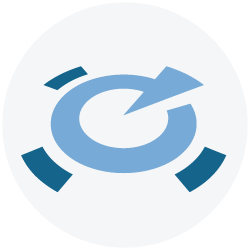“North and West of I-95” – why does snow in the Eastern US always seem fall to the West of I-95?
Why does it seem like the most snow falls North & East of the large cities of the North East United States?

Articles, videos, and documentation to help you get the most from Visual Crossing Weather
Why does it seem like the most snow falls North & East of the large cities of the North East United States?
Especially in solutions that combine data analysis and visualization with collaboration and planning weather is a valuable asset to identify business dependencies as well as adjusting planning and organizing day to day work-schedules. This tutorial shows the necessary steps to load weather aggregated to postal code or other geographical entities. Please see our YouTube Channel …
Continue reading “How to integrate weather data for postal codes in The Business Cloud of DOMO.”
In this article, we are going to build a simple Microsoft Outlook add-in that shows weather data in an ‘task panel’. Where possible, it will extract location information from the currently open email. It will show the weather history when the email was sent and the weather forecast for the same location. Whenever a message …
Continue reading “How to show weather data in an Outlook add-in”
Landscaping and lawn care businesses have a great opportunity to use quality weather data in an automated way to improve their efficiency, drive customer satisfaction, and increase profits. Common wisdom suggests that only larger organizations can afford to access automated weather data services, and smaller businesses are stuck watching the nightly TV weather person to …
Continue reading “How to use weather data in landscaping and lawn care businesses”
There are several options available to add historical weather data sets as well as weather forecast or typical weather. Directly from a Visual Crossing Map as a layer, as dynamic cube or directly into your RDBMS data warehouse. This tutorial provides step by step instructions for the first two options. For the direct load into …
Continue reading “How to add Weather Data to your MicroStrategy project”
In this article we are going to create a simple web app that displays weather data using the Visual Crossing Timeline Weather API. The output will be a simple HTML page that displays daily and hourly weather history data or weather forecast data (or even beyond) in a table. To download the source code for …
Continue reading “How to add weather data to a Node.js app using a Weather API and JavaScript”
In this tutorial we will create a simple frost alert using a Raspberry PI and the Visual Crossing Timeline Weather API. The aim of the simple circuit is to use colored LED lights to inform the user if frost or low temperatures are expected. A red light indicates below freezing temperatures are expected, yellow light …
Continue reading “How to create a Raspberry PI frost alert using a weather api”
As you already know, Dark Sky has announced that it is ending its popular weather query API service soon. We’ve already written multiple articles explaining the benefits and details of converting your app or webpage to the Visual Crossing Weather API. In this article, we will compare the pricing models of the two services. Specifically, …
Continue reading “Comparing the Visual Crossing Pricing Options to Dark Sky”
In this article you will learn how to request the best snowfall data. We will use the snowfall data available for download in Weather Data Services and the Weather API. How snow is measured There are three main variables that are collected by weather stations and trained individuals when collecting snow data: Snowfall: The amount of …
How to make intelligent decisions using BI and weather forecasts
Now, armed with the insights that we found in part two, we are ready to apply those insights using weather forecasts. As we did when analyzing our historical business records using weather history, we will use the high-quality weather data service that we identified in part one of this article series. Then, we will join this data with our business locations. Only this time, instead of finding existing patterns we will apply the patterns discovered to make more intelligent decisions.